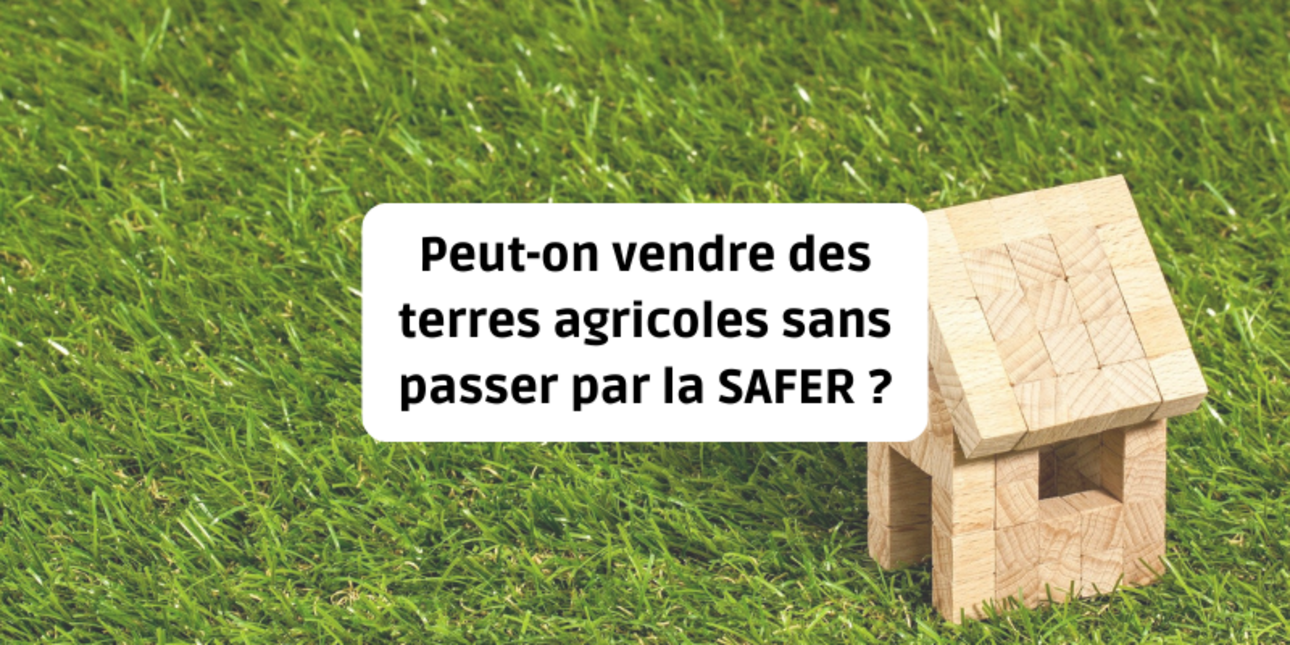
The sale of agricultural land in France is governed by a right of pre-emption granted to SAFERs (Sociétés d'Aménagement Foncier et d'Établissement Rural). However, there are many preconceived ideas that contribute to the confusion: people often think that all transactions "go through the SAFER", as if the SAFER were an obligatory intermediary or unavoidable estate agent. In reality :
This article details the legal framework, confusions, alternatives and precautions for selling agricultural land legally, while respecting the key stages of the sales process and integrating the essential keywords to optimise understanding and referencing.
Many sellers think that buying agricultural land automatically means making a deal via the SAFER. This confusion is due to the requirement for the DIA: since the notary must systematically send the file to the SAFER, the impression is given that the SAFER orchestrates all transactions. In reality, the DIA is simply a notification. You can perfectly well sign a preliminary sales agreement or a deed of sale directly with an initial buyer, without mandating the SAFER.
Unlike a traditional brokerage where the estate agent receives a commission, SAFER does not receive any remuneration from the seller. Its mission is to develop land, preserve its agricultural vocation and regulate rural land ownership. When SAFER intervenes on an amicable basis, it is to exercise a right of substitution, an optional practice that is not binding on you if you do not wish to subscribe to it.

The DIA is drawn up by the notaire who draws up the deed of sale. When the preliminary sales agreement is drawn up, the notaire prepares a complete file including:
The notary forwards the file to the SAFER, which then triggers the pre-emption period.
In accordance with articles L143-1 to L143-16 of the French Rural Code, the SAFER has a pre-emption period of 2 months from notification of the DIA. Once this pre-emption period has elapsed, the SAFER is deemed to have withdrawn, allowing you to sign the deed of sale and finalise the transaction.
SAFER's right of pre-emption aims to:
It is part of SAFER's public mission and contributes to land development.
Full pre-emption: SAFER takes the place of the original buyer and buys the property at the price set out in the agreement.
Price adjustment: if SAFER considers that the price is too high, it can offer a lower price. The seller then has three options: accept the price, refuse (and withdraw the sale), or apply to the Tribunal de Grande Instance to have the price revised.
The amicable substitution takes place as follows:
A single deed of sale is then signed between the seller and the buyer, mentioning SAFER's involvement as part of a substitution process. The SAFER then receives a fee, which in some regions exceeds 10% of the sale price. The contract of sale is also accompanied by commitments made by the purchaser in the form of specifications to be respected for a minimum period of 10 years.
Please note that the undertaking to sell signed by the vendor is much more binding than a mandate given to an agency. The owner is obliged to sell his property under certain conditions until the promise to sell expires. They do not have the option of refusing to complete the sale if SAFER so requires.

To sell agricultural land without resorting to SAFER substitution, you can :
Certain types of sale are exempt from the DIA:
A farmer wanted to sell 5 ha to his son. The DIA was sent, but the SAFER was unable to pre-empt the sale because it was a family transfer. The notary finalised the deed of sale two months after the DIA, without SAFER's involvement.
A plot of land has been leased to a farmer for 12 years. The SAFER receives the DIA but cannot exercise its right because the rural lease exceeds 3 years. The sale is concluded directly between the owner and the farmer.
A manufacturer wishes to set up a methanisation unit. The land is in a mixed zone, with partial planning permission. The seller contacts the buyer directly, signs a preliminary sales agreement and has the notary draw up the DIA. The SAFER does not pre-empt the land and the industrial land development project can begin.
If the DIA is not carried out, SAFER can request that the sale be declared null and void before the Tribunal de Grande Instance. The seller may also be liable for damages if the SAFER demonstrates that it has suffered a loss.
In the event of a price revision, SAFER may offer a lower price. If the seller refuses, he can apply to the court to have the price fixed. The procedure can take several years, with legal fees, expert appraisal costs and court costs.
The DIA (Délcaration d'Intention d'Alierner) is drawn up and sent by the notary who draws up the deed. The vendor does not have to submit it himself.
All sales of agricultural plots require a DIA. No clause can dispense with this formality.
Yes, you can publish an advert on a property portal, set a sale price and conclude the sale directly with a buyer. The sale will be notified to the SAFER, which may or may not decide to exercise its right of pre-emption.
As in the case of a pre-emption, the SAFER Technical Committee validates the objective, the price and the mission of the SAFER when a sale is substituted.